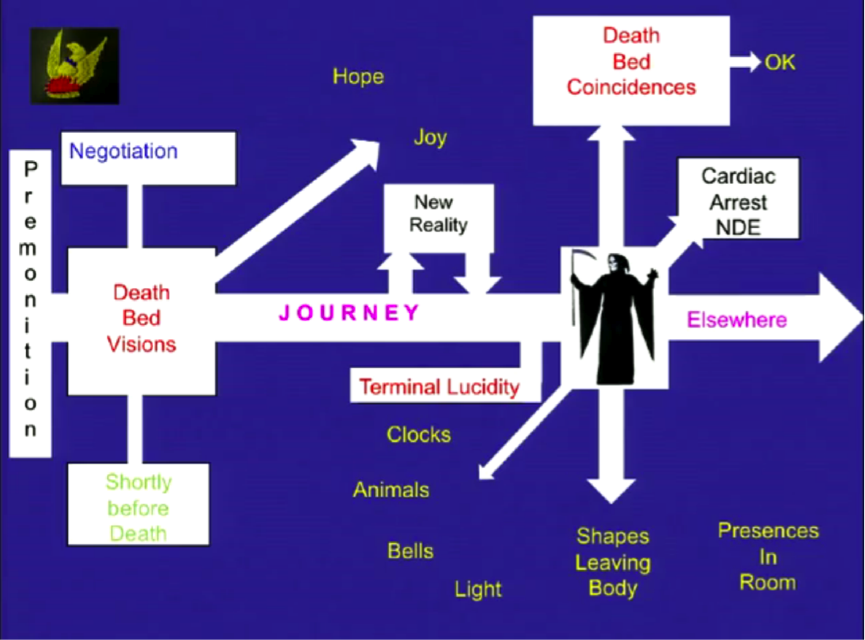The Art Of Dying Peter Fenwick Pdf

The Art of Dying is a contemporary version of the medieval Ars Moriendi-a manual on how to achieve a good death. Peter Fenwick is an eminent neuropsychiatrist, academic and expert on disorders of the brain. His most compelling and provocative research has been into the end of life phenomena, including near-death experiences and deathbed visions of the dying person, as wel The Art of Dying is a contemporary version of the medieval Ars Moriendi-a manual on how to achieve a good death.
Peter Fenwick is an eminent neuropsychiatrist, academic and expert on disorders of the brain. His most compelling and provocative research has been into the end of life phenomena, including near-death experiences and deathbed visions of the dying person, as well as the experiences of hospice and palliative care workers and relatives of dying people. Fenwick believes that consciousness may be independent of the brain and so able to survive the death of the brain, a theory which has divided the scientific community. The 'problem with death' is deeply rooted in our culture and the social organization of death rituals. Fenwick believes that with serious engagement and through further investigation of these phenomena, he can help change attitudes so that we in the West can face up to death, and embrace it as a significant and sacred part of life. We have become used to believing that we have to shield each other from the idea of death.

About The Art of Dying. A new book to help the dying, their loved ones and their health care workers better understand the dying process and to come to terms with. The Art of Dying by Peter Fenwick Free Book PDFDescription of the book? We have few special rituals to prepare for death, or to mark it, and we often fail to help.
The Art Of Dying Harrison
Fear of death means we view it as something to be fought every step of the way. Aimed at a broad popular readership, The Art of Dying looks at how other cultures have dealt with death and the dying process (The Tibetan 'death system', Swedenborg, etc.) and compares this with phenomena reported through recent scientific research.
It describes too the experiences of health care workers who are involved with end of life issues who feel that they need a better understanding of the dying process, and more training in how to help their patients die well by overcoming the common barriers to a good death, such as unfinished business and unresolved emotions of guilt or hate. From descriptions of the phenomena encountered by the dying and those around them, to mapping out ways in which we can die a 'good death', this book is an excellent basis for helping people come to terms with death. This book is one of the best books you will ever read, because it will forever alter your view of death if it is one of fear, and it will reinforce it if it is positive. I truly believe that our world would be a different place if everyone took the time to read this book.
People would spend more time on love and learning because they wouldn't be so scared that their time is 'running out.' This book is filled with numerous personal accounts of people who have communicated with the dead and dying, This book is one of the best books you will ever read, because it will forever alter your view of death if it is one of fear, and it will reinforce it if it is positive.

I truly believe that our world would be a different place if everyone took the time to read this book. People would spend more time on love and learning because they wouldn't be so scared that their time is 'running out.' This book is filled with numerous personal accounts of people who have communicated with the dead and dying, and it even explains what the living person experienced in each moment.
The Art Of Dying
It shows how death is like 'coming home,' and analyzes each instance with a scholarly (but easily digestible) approach. If you read this you won't regret it. Arguably one of the most comprehensive book on the subject. The process of death and dying is segmented into characteristic phases which are then separately discussed and backed up with a number of first-hand testimonies (probably collected by the authors themselves). But the ending chapters, in which authors discuss their findings against a huge background of existing literature (from The Tibetan Book of the Dead to modern day philosophical and medical sources), are no less interesting. It is c Arguably one of the most comprehensive book on the subject.
The process of death and dying is segmented into characteristic phases which are then separately discussed and backed up with a number of first-hand testimonies (probably collected by the authors themselves). But the ending chapters, in which authors discuss their findings against a huge background of existing literature (from The Tibetan Book of the Dead to modern day philosophical and medical sources), are no less interesting. It is clear that the authors did both: an extensive field research as well as their reading homework. For anyone interested this is a book to have and read.